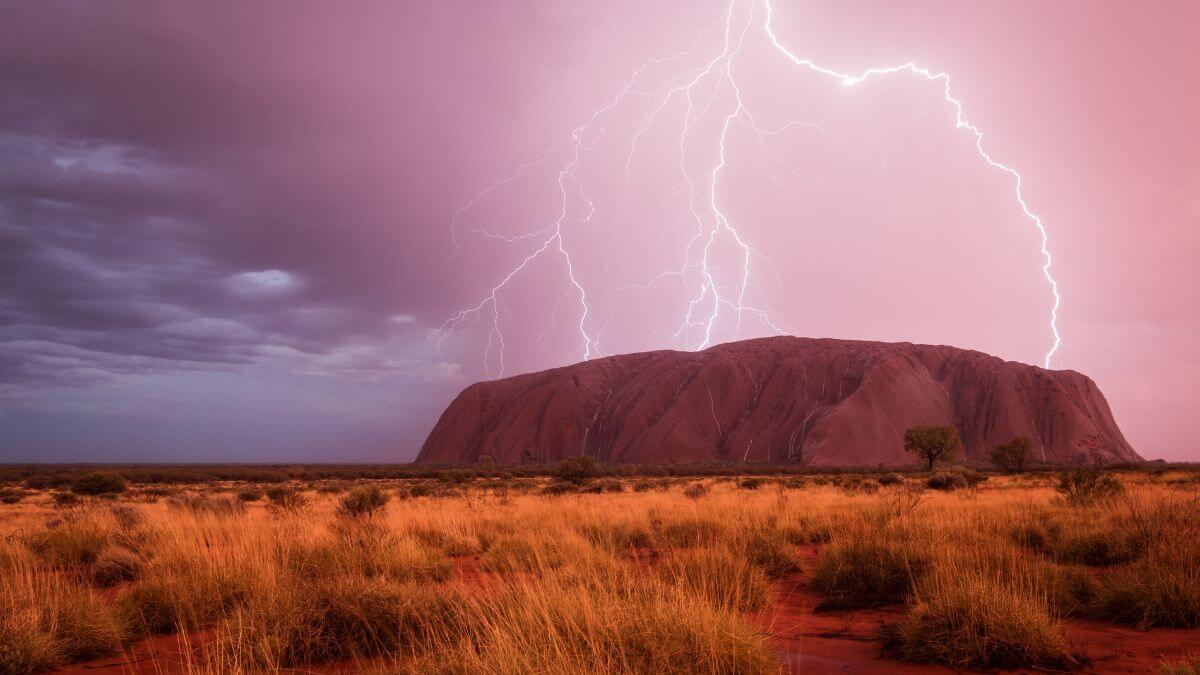Uluru, located in Australia’s Red Centre, is a must-see for both foreign visitors and locals. With these interesting facts about Uluru, you can get to know this impressive rock structure before your journey to the Red Centre! Continue reading to explore fun facts about Uluru that not everyone knows.
1. It towers over the Eiffel Tower.
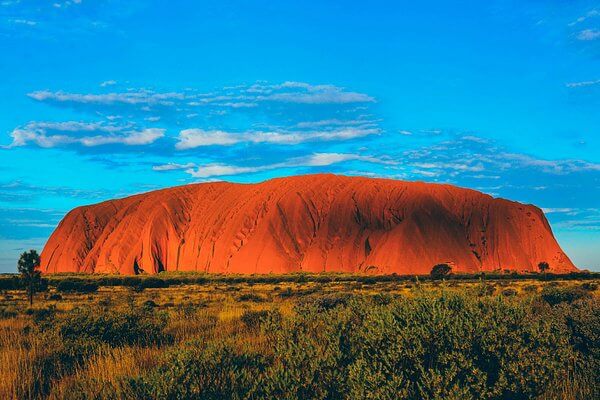
Uluru, which stands 348 meters above the surrounding terrain, is taller than several renowned buildings worldwide, including Paris’ Eiffel Tower and New York’s Chrysler Building. This is one of the most fun facts about Uluru.
2. There’s even more underground.
Uluru is massive, but most of its mass is hidden beneath the surrounding desert. Uluru, as we know it now, was formed by the erosion of the softer surrounding rock over millions of years. It continues for at least another 2.5 kilometers beneath the surface.
3. Traditional people own the Uluru-Kata Tjuta National Park.
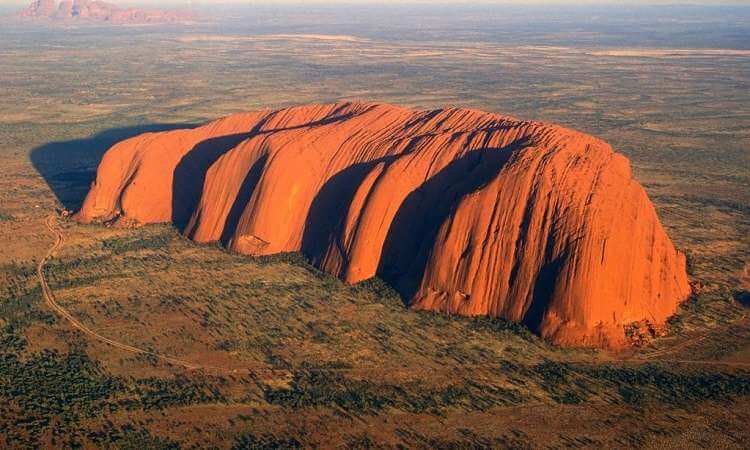
In 1985, the local Anangu people were recognized as the traditional proprietors. They now lease the land to the Australian government and administer it in collaboration with Parks Australia.
4. The trek around the base takes roughly 3.5 hours.
Uluru is 3.6 kilometers long and 1.9 kilometers wide, with a total circle of 9.4 kilometers. The amazing trek around the base takes you through a startling diversity of scenery and is best done early in the morning before the desert heat sets in.
5. That is why two names know Uluru.
When William Gosse became the first European to see Uluru in 1873, he dubbed it Ayers Rock after South Australia’s Chief Secretary at the time. The name was changed to Ayers Rock / Uluru in 1993 to reflect the Aboriginal name.
The names were then reversed in 2002 to prioritize the Aboriginal name. While it is officially known as Uluru / Ayers Rock, most people simply refer to it as Uluru.
6. Aboriginals have lived in the area for at least 30,000 years.
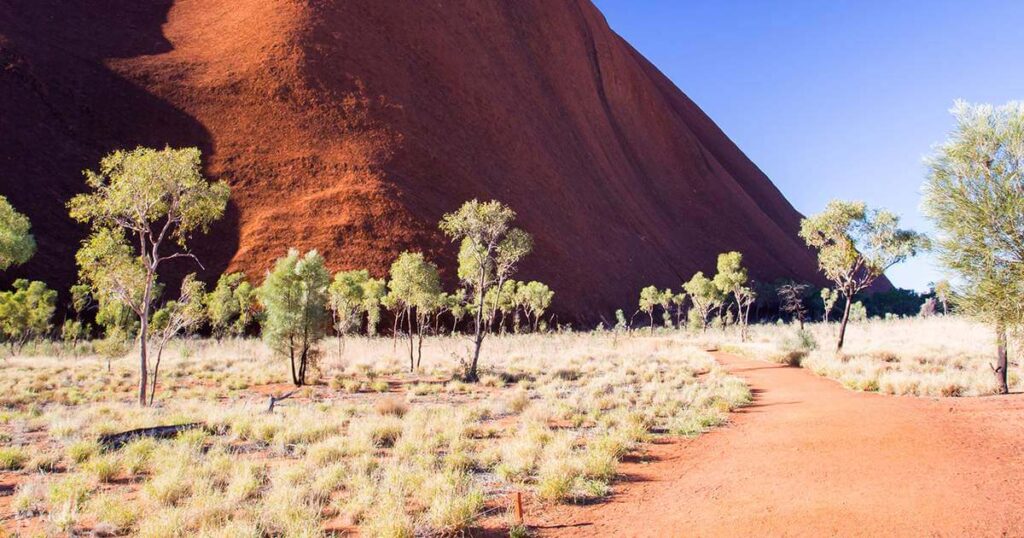
Archaeological evidence suggests that Aboriginal people have lived in the area around Uluru for more than 30,000 years. A trip around the base of Uluru reveals rock art, including drawings dating back 5,000 years. This is one of the most amazing facts about Uluru.
7. Every year, Uluru receives about 300mm of rain.
It fluctuates greatly from year to year, but Uluru receives approximately 300mm of rain each year on average, generating cascades and bringing fresh life to the rock and surrounding desert.
8. It is also listed on two UNESCO World Heritage sites.
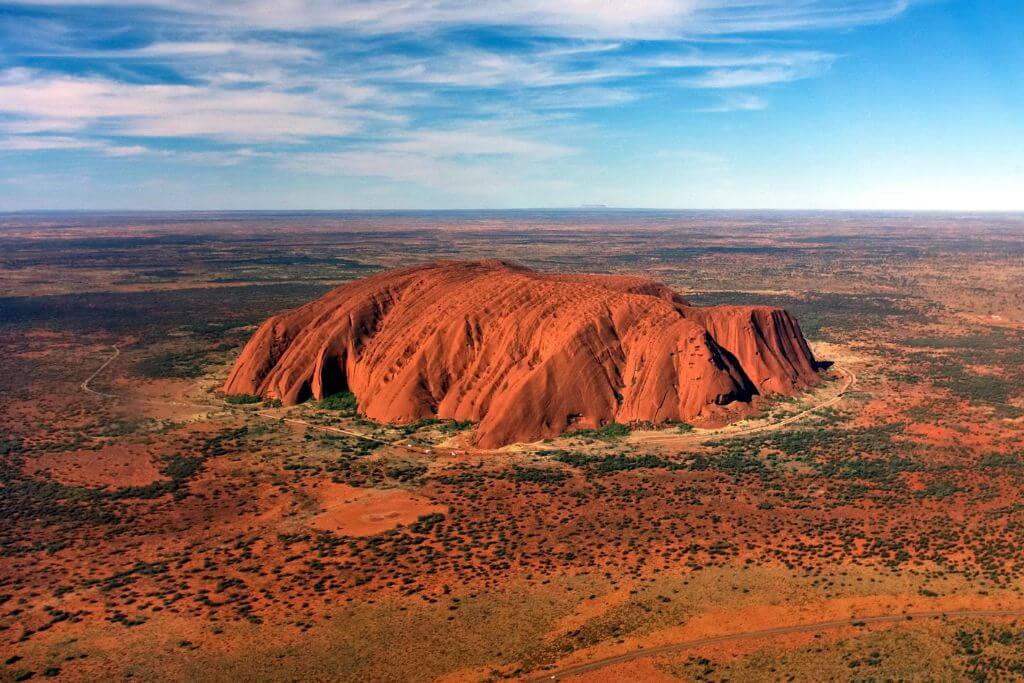
Uluru was added to the UNESCO World Heritage List in 1987 for its unique geology. The rock’s cultural significance to Aboriginal people was also recognized in 1997. This is one of the most interesting facts about Uluru.
9. Uluru is home to an astonishing variety of plants and creatures.
Uluru and its surroundings are home to approximately 400 plant species, many of which have traditional Anangu uses as food, medicine, and tools. The area is also home to 21 kinds of mammals, including dingoes, red kangaroos, and the spinifex jumping mouse.
10. It is more than 1,425,000,000 tons heavy.
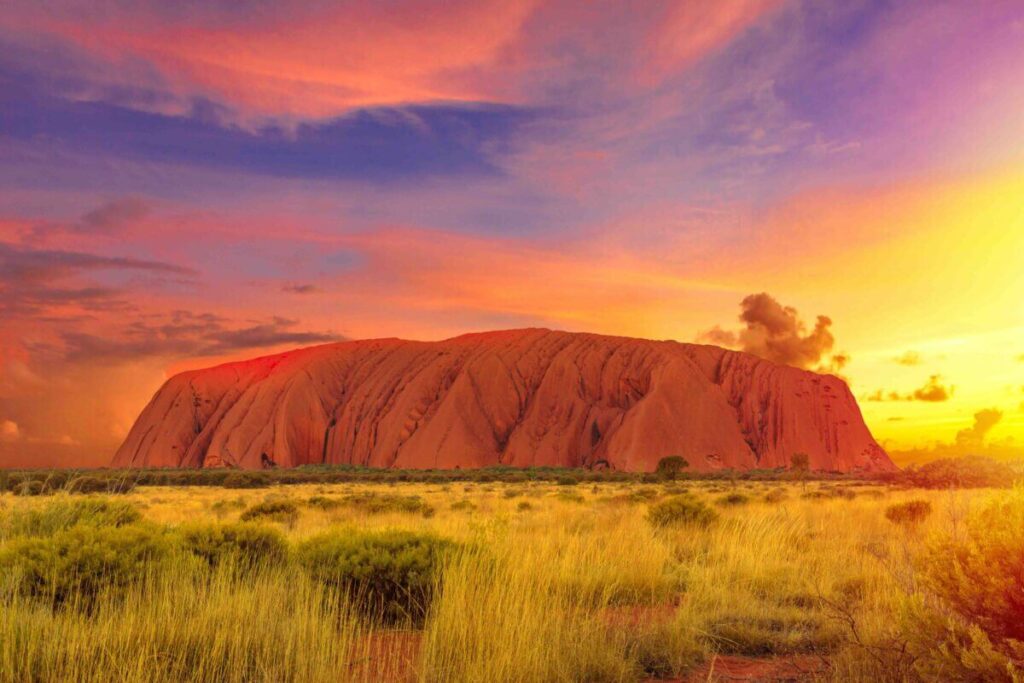
For the ABC television program Catalyst, the Northern Territory Geological Survey determined Uluru’s weight in 2018. Only the portion above the earth was included in their estimate of 1,425,000,000 tonnes.
11. In 1950, Uluru was originally designated as a national park.
In 1950, Ayers Rock (today known as Uluru) was initially designated as a national park.
Ayers Rock and Mount Olga were both removed from an Aboriginal reserve in 1958 to create the Ayers Rock-Mt Olga National Park. Mount Olga is now known as Kata Tjuta. In 1977, the name of the park was modified to Uluru and Kata Tjuta (Ayers Rock-Mt. Olga) National Park.
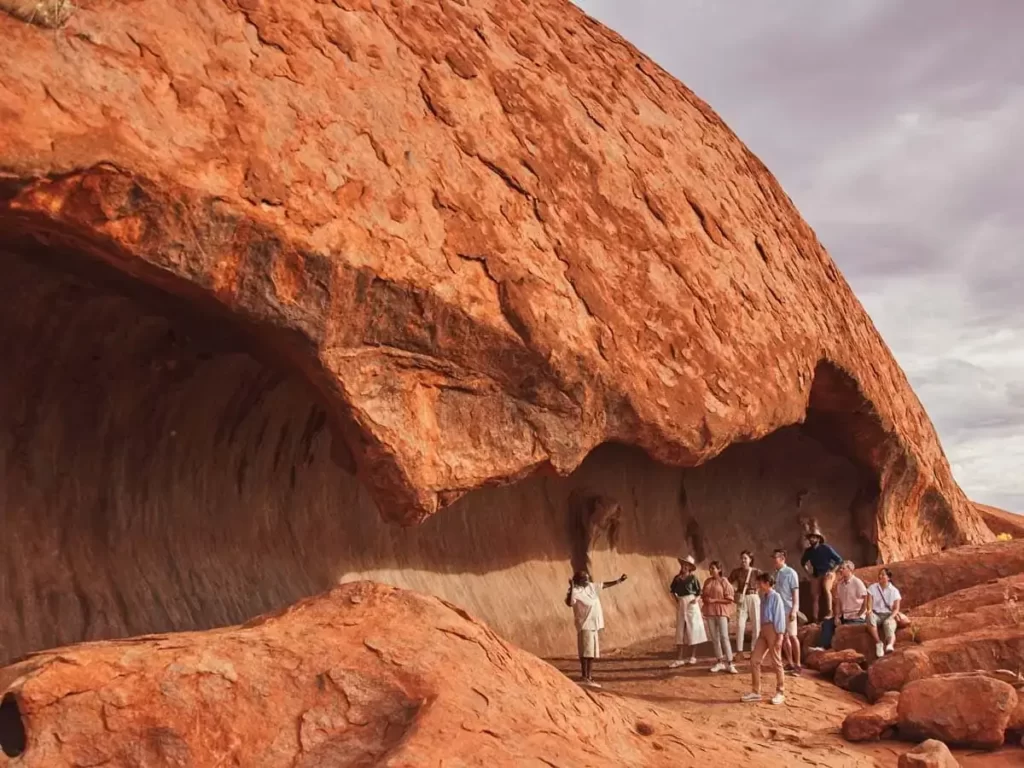
After more than 35 years of advocacy, Anangu was acknowledged as the park’s Traditional Owners in 1985, and the deeds were returned to their ancestral grounds. In 1993, the park’s name was changed to Uluru-Kata Tjuta National Park.
12. The first person from Europe to see Uluru.
In 1872, while traversing Central Australia, a group led by the explorer Ernest Giles came across Kata Tjuta. The next year, adventurer William Gosse saw Uluru for the first time as a European.
13. Aboriginal people continue to follow traditional ways.
Uluru-Kata Tjuta is a landscape with a vibrant culture. Tjukurpa (law) continues to serve as the Anangu’s guide to preserve their nation and culture. There has never been a change to this.
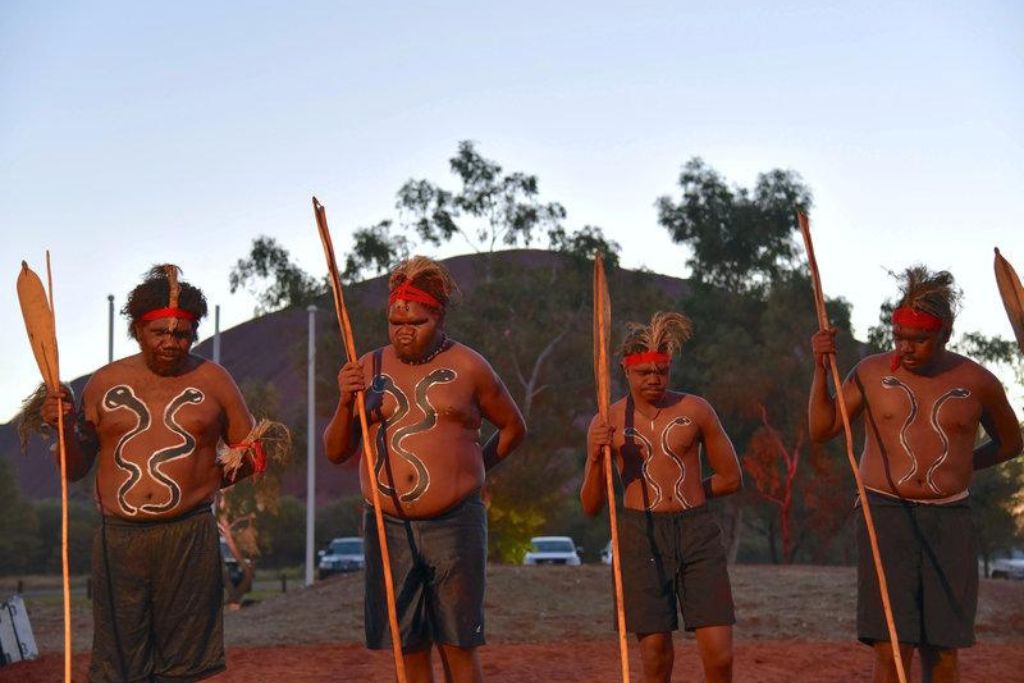
If you go to Uluru, you might encounter people picking bush food, performing inma (traditional dance and singing), or dot painting. This is one of the most amazing facts about Uluru.
14. The park is always warm and dry
Summertime temperatures can go as high as 47°C during the day. However, in the winter, the nightly low can reach 7°C.
15. It’s incredible how many people visit Uluru every year.
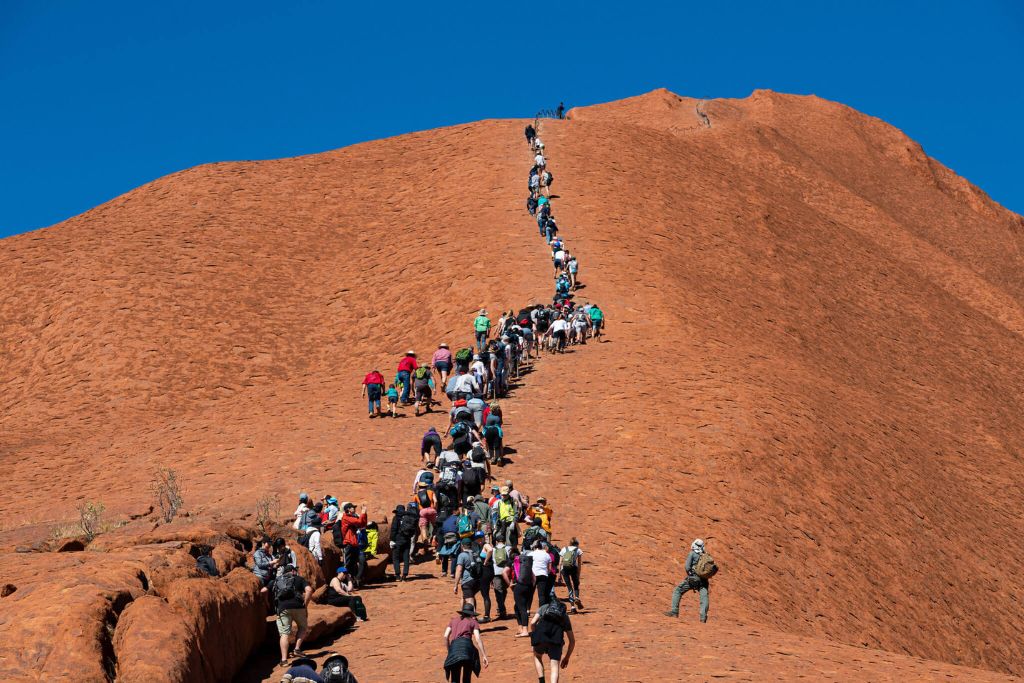
More than 250,000 visitors travel from all over the world each year to see Uluru and Kata Tjuta’s natural and cultural attractions.
16. Climbing Uluru is not permitted.
Out of respect for their old culture, the Anangu people always urged tourists to refrain from climbing the rock. When climbing was formally forbidden in October 2019, the last climbers reached the peak, and the chain guide that was tied to the rock was permanently removed.
